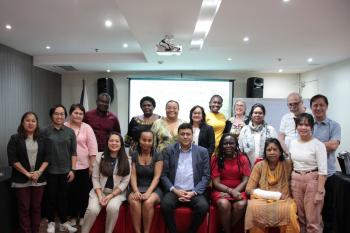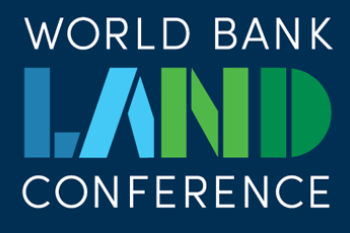
FIG Working Week 2017 highlights “GLTN Agenda”
The 2017 FIG Working Week, the 79th major international conference that the International Federation of Surveyors (FIG) has organized, represented an annual week-long conference that brought more than six hundred presentations with themes ranging from professional standards, land administration, land management tools and success stories, property markets, tenure security, new geospatial technologies, to proposals for a revising the surveyor’s education curriculum, to mention a few. Various FIG sessions in partnership with FAO, WB and the Global Land Tool Network, as facilitated by UN-Habitat, were also organized. During the Conference, land professionals have also recognized the importance and role of land governance interventions in achieving the Sustainable Development Goals (SDGs).
FIG together with GLTN partners jointly facilitated different sessions and meetings, and built awareness around the paradigm shift towards the recognition of the continuum of land rights approach and the need for fit-for-purpose, pro-poor and gender responsive land tools. With the FIG Young Surveyors Network (YSN) and other key partners, GLTN conducted one-day awareness training on the use and application of the Social Tenure Domain Model (STDM). During this session, participants were introduced to the rationale behind its development as well as its concepts, were taken through the various applications where the tool has been applied and was oriented to the main features of the software or information tool.
Prior to this training, the STDM Advisory Committee held an ad hoc meeting where the main discussion points were capacity development on the use of the tool including data generation, operationalization of the Committee’s technical working group, establishment of an independent Project Steering Committee, and “industrialization” of the tool with regard to scaling up its development and application. The members agreed that these efforts should be closely aligned with GLTN’s Phase III strategy which is currently under development.
GLTN’s Research and Training Cluster, made up of 28 universities and research institutions, presented the progress on the development of a knowledge base to support a curriculum on Responsible Land Administration. Participants were taken through the structure of the knowledge base, made up of six core modules and which is designed to be customized based on context. The discussions revolved around who are the primary target of the knowledge base; the level of usage of case studies that provide context-specific examples; packaging of materials through the use PDF and/or YouTube videos; updating of these modules, and types of reference materials to be used.
In collaboration with GLTN partners like FAO and RICS, FIG hosted a session on ‘Valuation of Unregistered Lands Methodology’ where participants were taken through the process of developing a Guide and providing further inputs to refine it so that it can meet GLTN partners’ and stakeholders needs, particularly in developing countries. The session also looked at other related initiatives and how these initiatives could support and reinforce each other. At the end of the session, it was agreed that the comments and feedback provided would be synthesized in aiding to finalize the Guide.
A session on the Social Tenure Domain Model Development Innovations was also jointly organized by Kadaster, FIG, OSGEO and GLTN Secretariat. The participants were exposed to the concepts and technical development of the tool. They were also introduced to the country experiences where it has been applied. Moreover, participants were taken through the growing recognition and adoption of open source geospatial tools by national state agencies such as the US Department of Defense, British Ordnance Survey and French Mapping Agency (GN) in using such tools as PostgreSQL to meet their data management requirements. During the Session, the FIG Volunteer Community Surveyor Program (VCSP) by FIG YSN, GLTN and FIG Foundation was also announced. VCSP is an innovative competency-based volunteer program for Young Surveyors that is designed to support various land interventions in GLTN priority countries.
Oumar Sylla, Leader of the GLTN (first image) and Dr. Chryssy Potsiou, FIG President (above), at the Opening Plenary. Photo UNHABITAT/Danilo Antonio
},"playback":{"autoplay":false,"oembed":true,"so_field_container_state":"open"},"_sow_form_id":"598045efc8a69","_sow_form_timestamp":"1501584379970"}}"]
The VCSP leverages on the skills, experience, talents, and education of young surveyors, and match these competencies with the needs and requirements of GLTN’s priority countries. The launch of the VCSP marked a culmination of the partnership between the GLTN and FIG YSN based on the over 250 young surveyors who have been trained over the last couple of years on the use and application of GLTN tools particularly on the Social Tenure Domain Model (STDM).
FIG in collaboration with the World Bank, GLTN Secretariat and Kadaster together with key individuals facilitated a session on Fit-For-Purpose Land Administration which aimed at taking stock of how GLTN partners and key institutions are taking forward the new approach. One of the key discussion points was around the misconceptions on the respective roles of the stakeholders in the implementation of such an approach, particularly the role of surveyors. It was agreed that one way of addressing this would be to develop clear messaging targeting the different groups of professionals on what their respective roles would be if such an approach were to be adopted at a national level. It was proposed that this messaging should also target politicians as well as the economic managers. GLTN Secretariat also highlighted the new opportunities offered by international frameworks such as NUA, SDGs, LPI F&G and VGGTs in implementing Fit-For-Purpose land administration approaches.
FIG in collaboration with the World Bank, GLTN Secretariat and Kadaster together with key individuals facilitated a session on Fit-For-Purpose Land Administration which aimed at taking stock of how GLTN partners and key institutions are taking forward the new approach. One of the key discussion points was around the misconceptions on the respective roles of the stakeholders in the implementation of such an approach, particularly the role of surveyors. It was agreed that one way of addressing this would be to develop clear messaging targeting the different groups of professionals on what their respective roles would be if such an approach were to be adopted at a national level. It was proposed that this messaging should also target politicians as well as the economic managers. GLTN Secretariat also highlighted the new opportunities offered by international frameworks such as NUA, SDGs, LPI F&G and VGGTs in implementing Fit-For-Purpose land administration approaches.
The session on ‘Land Tools for Tenure Security’ highlighted the work of GLTN partners in the development of land tools as well as the linkages to and contributions by the professional organizations and individuals. One of the key strategies that were highlighted was the need to adopt and implement Fit-For-Purpose land administration solutions as well as pro-poor gender-sensitive land tools and approaches as essential to unlocking the social, economic and environmental benefits of land, especially in developing countries. This session was facilitated by FIG, University of Twente and RMIT University with support from GLTN Secretariat.
FIG, as the Professional Cluster Lead, also convened a Cluster meeting to identify areas where to further strengthen the Cluster contribution to the objectives of GLTN. Partners had an opportunity to provide a status update, challenges faced and lessons learned with regard to their respective activities in the Cluster work programme. GLTN Secretariat also presented the updates on the Phase 3 Strategy Development with the aim of soliciting inputs from cluster members, particularly on key priority interventions that would support GLTN’s agenda moving forward.
Overall, the event provided an opportunity for GLTN partners to engage and identify opportunities to contribute towards the attainment of the Sustainable Development Goals as emphasized by Oumar Sylla (Head of the Land and GLTN Unit of UN-Habitat) in his speech at the Inaugural Plenary Session. He highlighted the importance of responsible land governance as a key component in the realization of the recently endorsed global frameworks - in particular, the Sustainable Development Goals (SDGs) and the New Urban Agenda (NUA). His message included the importance of the role of land professionals in supporting the implementation of these frameworks and the need for monitoring land governance through such initiatives as the Global Land Indicators Initiative (GLII).
GLII would require land information to track progress on critical land issues globally, with a focus on SDG indicator 1.4.2 to track security of tenure. In his closing remarks, he expressed gratitude to FIG and other GLTN partners in the Professional Cluster for a long history of partnership and collaboration. He further stressed the importance of further strengthening the partnerships in addressing global land challenges for sustainable development, peace and stability, and the realization of human rights.


